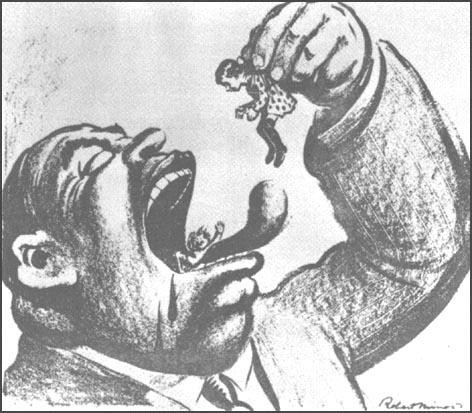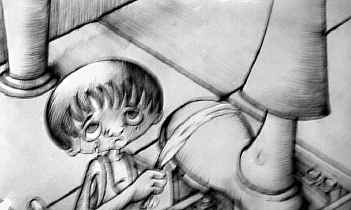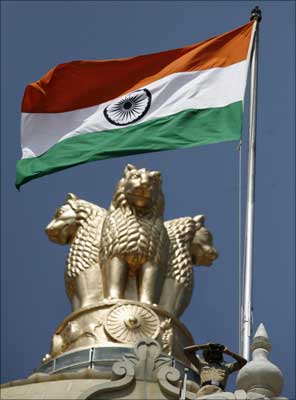
India has a dubious distinction of fostering the highest number of child labour in the world. The great challenge for a developing country like India is to provide nutrition, heath care and education to these children. Out of the total labour force in India, nearly 8.5% are children engaged in traditional agriculture, less than 9% of children work in manufacturing services and repair works, 5% work in factories and workshops. Of the total child labourers in India, nine out of ten children work in their rural family settings.
Child labor is a complex problem interlinked with the various socio economic conditions. Poverty is considered its main cause, which further leads to illiteracy, low productivity, poor health and low life expectancy. The problem of child labour is thus a vicious circle. Poor children in India begin working a very young and tender age. Many families expect their children to continue the family business at a very juvenile age.
Parents send their children to work at a very puerile age so that they add to the income of the family. Children of the age group of 7 to 12 years are higher as domestic help, here they are ill treated, and due to immaturity they are not able to raise their voice against such treatment of their masters. Furthermore they fear the wrath of their parents if they complain to them. There have been in numerous cases where they the child is maltreated by the employers and have suffered physical and mental abuse.
Children are employed in firework manufacturing factories, glass factories, mica cutting and shellac manufacturing units, soap factories, brass factories, and cement manufacturing factories. Here they work under life threatening and hazardous working conditions, they work for 12 hours and are paid minimum wages. The employers exploit the children and do not want to be held responsible for this work force. We have come across cases where the children have suffered accidents but were denied compensation because the employers failed to officially recognize these children to be on their rolls.

A majority of parents living under the poverty line live off the earning of their children sit around gambling and drinking; there is nothing the government can do for such useless people whose main problem is laziness. The attitude among such masses is “why send the child to school when you can get him to learn trade? This group of people believes that there is no great advantage in educating the child. They are of the notion that if the child starts to learn young, he will start earning young.
It is quite clear from what have gone before that all employers whether exports, craftsmen or contractors are interested in child labour because it is the cheapest form of labour available and children prove to be the best available option.
The government of India is working endlessly to eradicate it. Under the section of Child Labour (Prohibition and Regulation) Act 1986 of India, no child under the age of fourteen shall be employed or permitted to working any form of occupation. Through a notification dated May26, 1993. The government of India has regulated the working conditions of children. Following up a notification of October 5, 1993, the government has also prohibited employment of children in occupation process like slotters, printing, cashew nuts processing and shouldering. The central advisory board on Child Labour suggested reviewing the progress of welfare measures for such children; it also suggested reviewing the implementation of the existing legislation administered by the central government.
The Supreme Court of India, in its judgment of 1996 envisages that the offending employers of children should pay a contribution of Rs. 20,000/- to a welfare fund to be established for the purpose, withdrawal of children from working in hazardous industries and ensuring their education in appropriate institutions, employment to one adult member of the family of such children.
The Global Fund for Children believes that education is the basic human rights of children regardless of their individual circumstances. Since its founding in 1994, the Global Fund has been committed to securing this right for the world’s most vulnerable children. The organization helps to build the foundation of civil society by shaping the local, regional, national and international policy and practices. It has been working profusely for the child labourers of India.
Another organization in India working for the cause is RUGMARK. It is trying its best to break this circle by helping poor children. it provided free education up to primary level, text books and uniforms. Besides it provides vocational training in many cases.
RUGMARK is spreading awareness among the people in the carpet belt where there is maximum abuse of child labour and making parents realize responsibility towards their children.
Poverty is the main cause of Child Labour and hence cannot be legislated away.
It is part of a vicious circle, and eradication of the former will lead to the restraint of the latter. Children are like the nascent bud, which need proper care to blossom. India is a largely populated developing country, although there are capitalists and foreign investors investing in India yet if we view the picture as a whole a major chunk of the population is still living in inhuman living conditions with lack of education, there more mouths than the bread, in such a scenario parents find it more feasible to send the child to work rather to educate them because it is literally impossible to feed their children let alone educating them. We verbalize reforms but no rigorous action is taken Child labour will continue to spread its vicious fangs in the society, we will keep finding small battered futures of India selling newspapers at traffic signals at an age when they should be learning to read them and offering tea at the nearby tea stall. This needs to be given a though and every one of us needs to realize intensity of this evil. Is this what the future of India beholds?
Deprived Childhood




